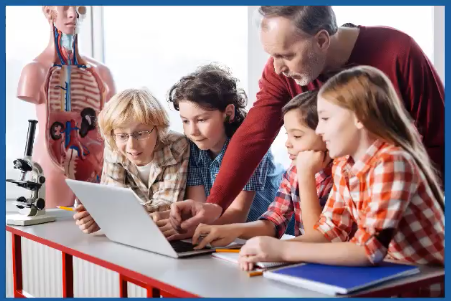 What does the word “reflect” mean to you? Maybe it means sitting on top of a mountain with your eyes closed and humming a mantra. Perhaps it might include a retreat…or a beach.
What does the word “reflect” mean to you? Maybe it means sitting on top of a mountain with your eyes closed and humming a mantra. Perhaps it might include a retreat…or a beach.
Now what does the word “talk” mean to you? Does it suggest a pleasant hour over coffee with a friend? Or—in the context of your classroom—total chaos and something to be discouraged?
The truth is, reflection and purposeful talk are essential if students are to truly learn. They transform an ordinary lesson into a meaningful learning experience. They challenge students to think critically and at a higher level. They help them make connections and understand why they are learning and how they are learning, analyze their mistakes, and set concrete goals for improving next time. Together, reflection and discussion are what make learning stick.
Take the reflection challenge
Reflection is not rocket science. Yet this simple practice is often overlooked in the busyness of the day. We all know we should schedule regular opportunities for group and/or individual reflection activities. We all want to. But if we don’t intentionally build in times and routines that slow everyone down and invites thinking, it probably won’t happen.
I challenge you to re-think how you wrap up the day. Rather than instructing students to put their supplies away and clear their desks, set aside the last moments of the day to have them reflect on what they learned. Yes, you should expect groans, complaints, and feet dragging. But you can make it fun. Give them choices. Some like to talk it out, others like to write it out. Experiment with journaling, sentence stems and evaluation prompts—a few of the many ways to get kids to open up and really think.
Let the discussion begin!
Not all reflection needs to take place in a student’s head. Children can construct meaning through open discussion with other students.
The days of children sitting at their desks working from textbooks are over. When students discuss, collaborate and share, new ideas are generated and everyone’s learning from each other.
I’m not suggesting a free for all. But rather discussion guided by you, that encourages students to share, expand and clarify their thinking. You can start with purposeful collaboration prompts, like: Can you say more about that? So, let me see if I understand what you’re saying (restate, giving the student the option to agree or disagree). Why do you think that?
The room may be silent at first. But soon your students will readily respond to your prompts and to the idea that their learning connects to the real world. They’ll be so immersed in thinking they may not even realize they are learning. It will be a great experience for all!
Digital natives are taking over!
Never before has it been so difficult to capture our students’ attention. As teachers, we’re up against email, Twitter, Instagram, and Facebook. It’s enough to make your head spin. But students are embracing technology with open arms. Because of this, teachers must bravely leave their fears at the door and join them. Check out these doable ideas:
- Enrich reflection and discussion with Google applications. Google Drive enables students to comment on other students’ documents and share video and audio reflections with you and their peers. Google Classroom can help you manage assignments, assessments and other student interactions more quickly and easily. And, Google Groups opens up a traditional forum where students can reply to each others’ threads.
- Bring blogs into your classroom with KidBlog. This very kid-friendly and safe blogging platform puts teachers in complete control, from who sees the posts to who can comment.
- Re-think the traditional bulletin board. Padlet is an online virtual (and secure) bulletin board where you and your students can collaborate, discuss, reflect, and share pics and links.
This is my list of reflection and discussion tools, put together from conversations with teachers. What do you think? How could you use these tools in your classroom? Are you using any that I haven’t mentioned? Please share!
For more information, check out our Tech Tools webinar video.
Click below for relevant resources:
